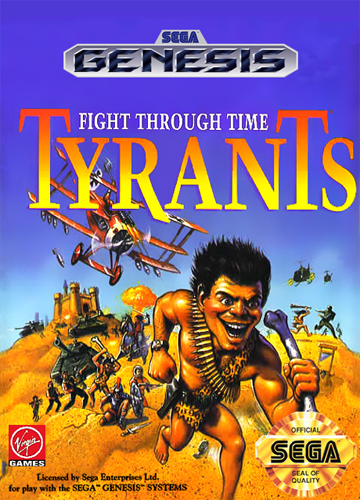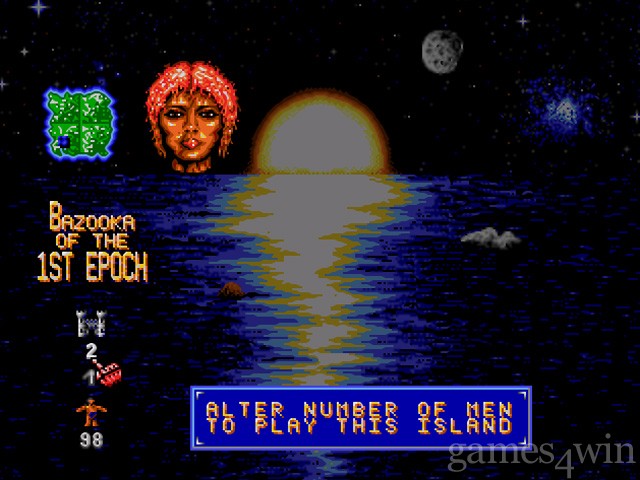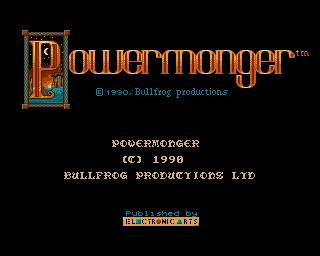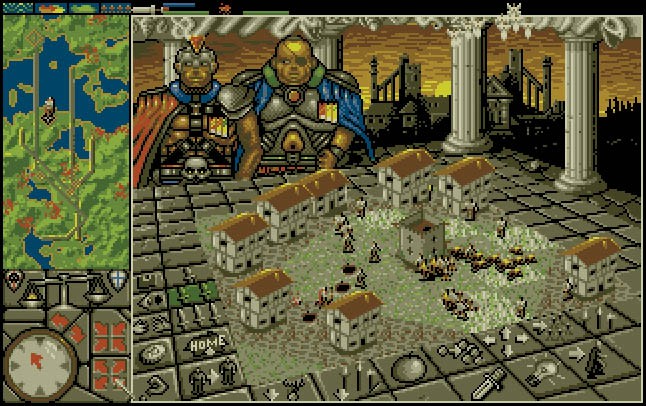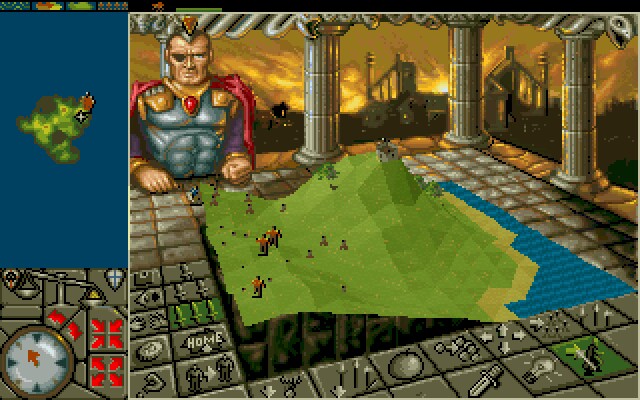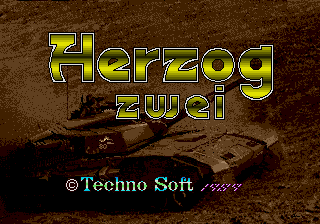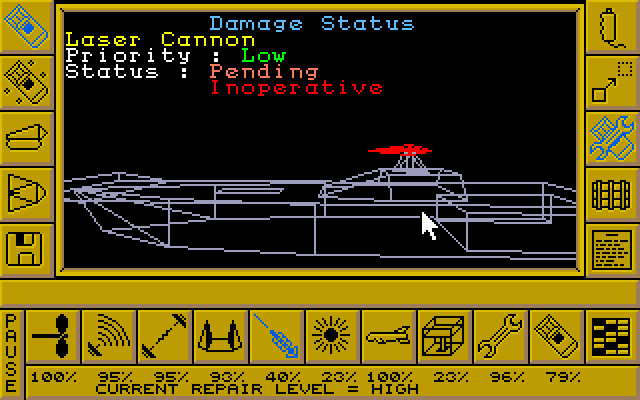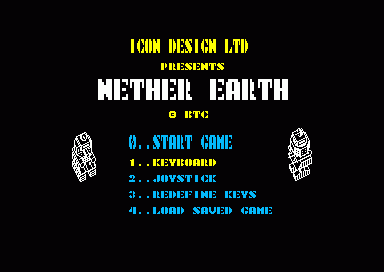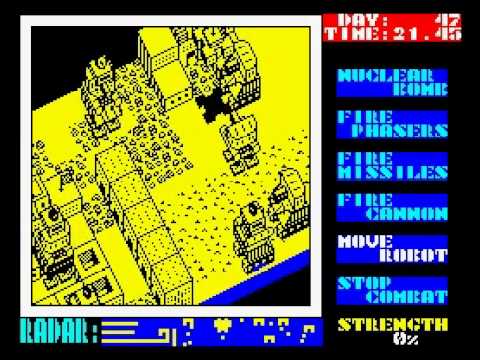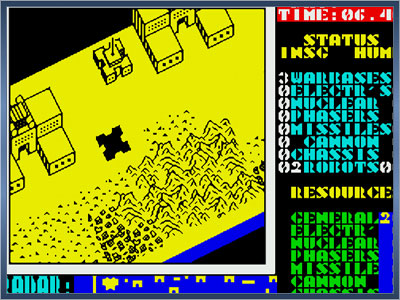Petty gods and tiny wars
Developed by Sensible Software. Mega lo Mania, or better known as Tyrants: Fight Through Time in the US, is a real-time strategy game that introduced some interesting new features to the genre… but first, let me get the premise out of the way. Out in space, when a new planet is born with intelligent life, a game between gods is played to decide who will look over them… control them. The game is a battle between gods through the history of mankind, where the objective is to wipe out the other gods forces completely.
Game Structure
The first thing you do before anything is choosing the god you want to be. Its really only a cosmetic difference, which is a lost opportunity.
The game is divided in epochs (time periods) that relate to the progress of mankind technologically. The first epoch, you fight with sticks and stones. The last epoch, you fight with laser guns and nuclear missiles. Each epoch contains three islands that represents levels. After you conquer the three islands in each epoch (each island is a battle between 1 or more gods), you move the next set of islands and the next epoch. That is until you reach the final epoch… Mega lo mania. Here, it is just one square island where all you do is prepare your army with the latest weaponry and battle it out. The victor, is declared ruler of the planet.
Gameplay
During the actual battle, you can move to the next epochs temporarily. You always start each battle on the epoch you currently are in the campaign. But you can progress to the next two epochs while in-battle. This is important to know because battles are usually determined by who has the best technology first. Battles take place in islands. Islands are divide in sections. Some islands have more sections than others. Each section represents an enclosed non-scrollable area that can be used as a base. For each section, you can have 1 castle, 1 of each of the other buildings, and also each section may have a different combination of resources available. You will always start with a base / castle.

This is how you start the game, the other colors are the other gods. Everyone is in their own section but you can teleport units to other sections in an instant.
Your main resource in this game is manpower. Manpower literally represents individual units. They can be used to fight, to defend structures, to research new technologies, to collect resources like wood or minerals, to work in factories to produce items, and to capture island sections. Also, everything that requires manpower can be made to go faster the more manpower you assign to the task.
Before you start the battle, you have to decide how much manpower you want to start with. In each campaign scenario, you have around three islands and 100 manpower to divide amongst them. In-game you can gain more manpower simply by idling them in you castle. They “clone” themselves. The more you have idling in your castle, the faster you gain manpower.
The most important tool you have to win battles is in the design of blueprints. In order to equip weapons to your units, first you have to design the blueprint for it, or in other words, use manpower to research a new technology. In order to have the blueprint available for design, you have to have the necessary resources. The interesting thing is, that items can be made with different interchangeable minerals. Some produce better versions of the item than others.
In order to design the blueprint when you have the required minerals, you have to assign manpower to the task of researching the blueprint. The more assigned, the faster its researched. Once it is done, if the item is not sufficiently advanced that it requires a factory or lab to create, then if you have the resources specified in the blueprint, you can assign manpower equip the items. Items like a throwing rock, spear, catapult, longbow, cannon, plane, etc…

Getting access to planes gives before your opponent gives a significant advantage since they move fast and can’t be easily hit by most units.
You can also trash a blueprint if you want to design a blueprint that uses better resources to make a better version of the item. Items that you can research can be split into offensive weapons that you can use to fight enemy units and buildings, or defensive weapons that are equipped by units that are placed in the limited number of towers on top of your structures, or as shields to repair your structures. If you research enough blueprints, you automatically jump to the next epoch, providing new upgraded blueprints to research items or new structures like a mine or factory.
Also important, a blueprint is only available in the specific section of the island that it was researched. However, you can equip weapons to units ( each unit is equivalent to 1 manpower), and send them to other sections, where they will be stored in case you need to use them again.
Thoughts
I came into this game with zero expectations. Up until I started my research, I never heard about it before. At first glance, it seems like such a weird game. Not like any other strategy game I’ve played before. But after spending some time with it, I started to enjoy myself and its peculiar systems. I also started to realize that this game had many innovative features that would later be standard in the RTS genre. Here is a short list:
- Researching tech for upgrades.
- Advancing tech levels (Like Age of Empires).
- Voiced in-game characters.
- Varied amount of different resources to gather.
- Ability to assign more manpower(units) to speed up task (like building structures in Age of Empires).
Overall. It sits besides Herzog Zwei as the two games I’ve played in the pre-Dune II era that I was having fun while playing. Funnily enough, they were both console games. To me, it deserves to be remembered for all the unique things it tried to do, and fairly well at that.

